The Sky for Feb & Mar 2014
From mid-February to mid-March, there will be opportunities to see Jupiter, Mars, Saturn, Venus, and Mercury. Mars, in particular, will draw closer to us and get bigger and brighter, as it heads toward opposition in April. There’s one double shadow transit on Jupiter. Rarely visited constellations, like Antila and Pyxis, present themselves, offering up interesting double stars and deep sky objects like Ghost of Jupiter and the Spindle Galaxy. The Cigar Galaxy (aka Messier 82) is high in the sky affording good views of the slowly dimming supernova SN2014J.
Blake Nancarrow delivered the following The Sky This Month presentation at the 19 February 2014 Recreational Astronomy Night Meeting at the Ontario Science Centre. The handout provided included a calendar for portions of Feb and Mar 2014. The notes have been reproduced here. You may view or download and print the calendar PDF file (350 KB). Chris Vaughan produced a PDF sky chart (195 KB) with some suggested targets for the recent telescope clinic. We've made it available as well.
Note: here's an updated version of the sky chart PDF file (2.9 MB).
Photo by Blake Nancarrow.
There’ve not been many clear nights of late but I try to take advantage if I can. A couple of weeks ago I set the telescope up in the snowy back yard and briefly imaged the supernova in Messier 82. Last weekend I was up at the Carr Astronomical Observatory on the Blue Mountains and tried to take advantage of the partly clear conditions on Friday night. Saw a few more RASC Colourful Double stars. Saturday evening offered better conditions but we were all completely exhausted after building a large igloo. Pity. One of the best skies I had seen in a long time.
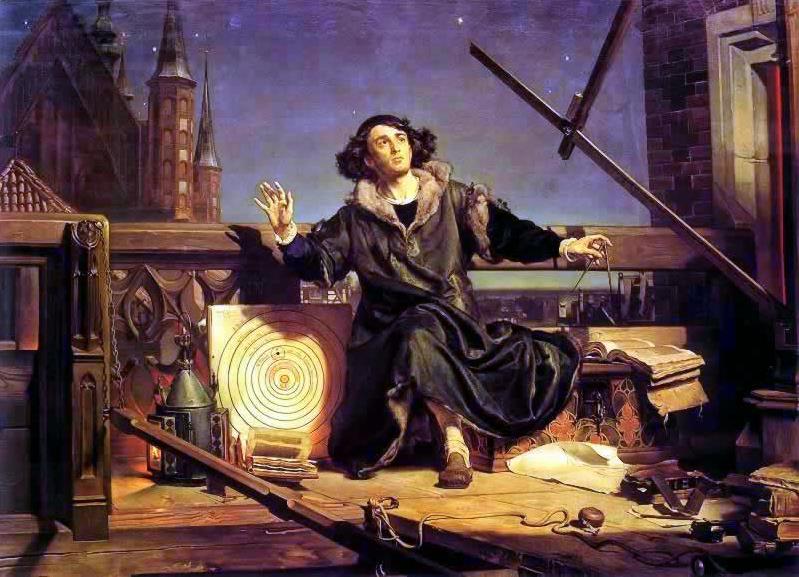
Painting by Jan Matejko.
Today is Copernicus’s birthday. He was born in 1473 (on 19 February). That was 540 years ago. Of course, Copernicus was one of the people who helped us better understand the solar system and our place in it. Notice the illustration to his right, his portrayal of a heliocentric system. He understood that the Earth was the centre of the Moon’s orbit. The Earth-Lunar system is represented on his diagram by the black dot surrounded by the small circle. He knew that the Earth revolved around the Sun, the orange circle in the centre of his design. He also stated “All the spheres revolve about the sun as their mid-point, and therefore the sun is the center of the universe.” Pretty close to what we now believe. The universe was small back then.
Photo by Lynn Hilborn.
Speaking of the solar system, you have an opportunity to see the material from which the solar system formed. It is widely believed that proto-planetary systems are born from dusty, lumpy disks surrounding young stars. As the rock and gassy planets coalesce, they consume the gas and dust. But there’s a little bit left still floating around. When the ecliptic, or path of the planets, is angled high in the sky, you might be able to see this dust reflecting sunlight. February and March offer chances to see the Zodiacal Light in the west after sunset when the Moon is not up. You’ll need to be in a fairly dark location.
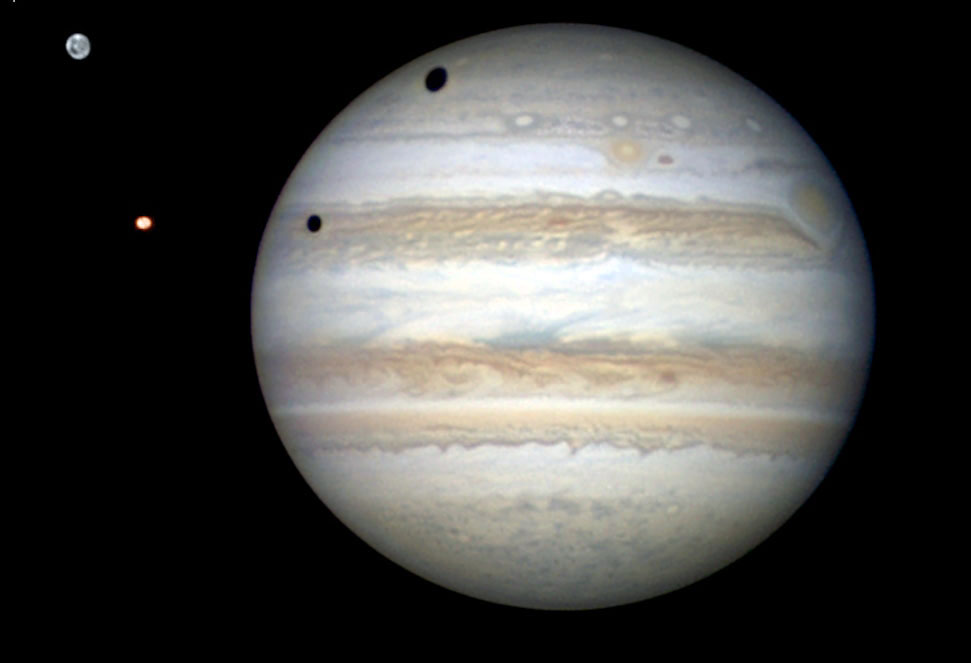
Photo by Damien Peach.
Jupiter is well placed for evening viewing. It is always interesting to examine with its four bright moons dynamically moving in front and behind the planet. When a moon is in front of the gas giant, or between the planet and Earth, we call that a transit. If a moon is between the Sun and Jupiter, it may cast a shadow on the cloud tops of Jupiter. We had rare triple shadow opportunities a few months back; there’s a double shadow op on March 16. I have noted on the calendar when multiple events occur in the same evening, including Amalthea elongations. This is probably foolhardy but one of my new challenge objectives is to spot the tiny moon as it rapidly orbits Jupiter. The best chance to see Amalthea is during an elongation, when it is at the extreme east or west distance from the planet. But this is likely out of the question at magnitude 15.
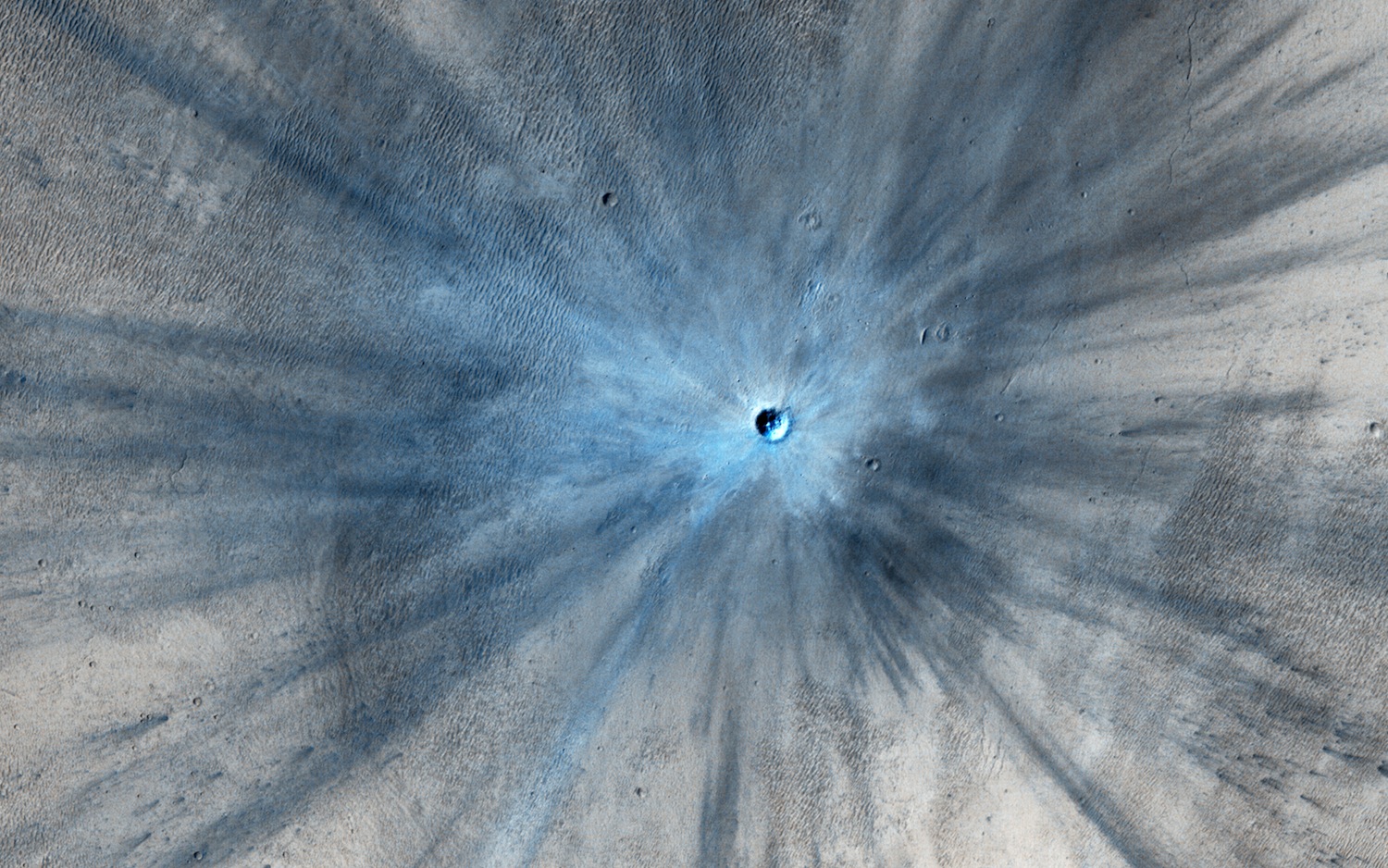
Photo by NASA.
No, you won’t see craters like this on Mars with your backyard telescope. This recent hit was spotted by one of the Martian orbiters. Some wonder if this, or a similar meteor hit, was responsible for the mysterious and sudden appearance of a rock in front of the Curiousity rover.
Mysterious Mars is getting closer, bigger, and brighter, heading toward opposition on April 8. At opposition, if you were to draw a straight line from the Sun, through the Earth, and extend outward, the line would touch Mars. That means Mars is closest to the Earth and that means we should be able to see good detail on the surface of the red planet. Light and dark regions, the ice cap, and perhaps dust storms. I also have challenge moon targets with Mars: I want to spot faint Deimos and Phobos. The fourth rock from the Sun will be 12 seconds-of-arc in size at end of February. In April, the apparent planetary disk diameter will be 15 arcsec.
Every chance you get, check out Mars. I recently spotted it rising out of the south-east at 1:00 AM.
Photo by Katrina Ince-Lum.
If you’re an early bird, you might take in Saturn, Venus, and Mercury in the morning sky. Venus is unmistakeable, intensely bright. I spotted it this morning in the south-east while waiting for the bus. It will almost reach magnitude -5!
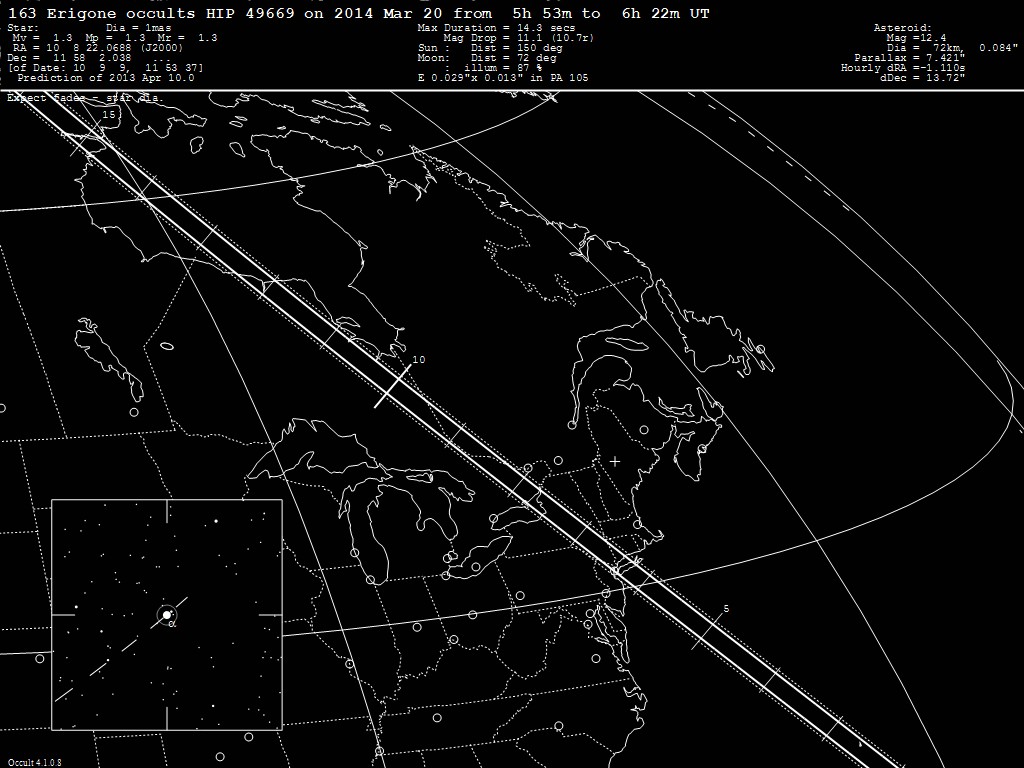
Image by Occult.
If you’re interested in chasing a shadow, you might try to observe, or video record, the occultation of bright Regulus by asteroid 163 Erigone. This is expected to occur on the evening of Wednesday 19-Thursday 20 March. More precisely, between 1:53 AM and 2:22 AM, along a path from Manhattan through upper NY state, over Prince Edward county, over Algonquin Park, and continuing northward along the eastern edge of Ontario. The predicted time for Ontario is after 2:00 AM Eastern Daylight Saving!
Note: we'll be back on EDT by then!
Assuming the weather cooperates, it should be easy to get centred on the target star. Regulus is to blink out for 14 seconds. This high-rank occultation might be a good way to stick your toe in the waters of citizen science. An interesting aspect of this event is that the star is visible to the naked eye.
I understand some RASC Toronto Centre members are planning to road-trip toward Kingston. Some might set up in dark parks. And some might deliberately try to position along the edge of the shadow path, hoping to tag possible moonlets.
See http://occultations.org/regulus2014/ for more information.

Image by Stellarium.
I found it interesting the Stellarium software display of the night sky at midnight on March 1. It shows a number of interesting nebulae, galaxies, and clusters off to the right, in the constellations of Auriga, Orion, Monoceros, and Canis Major. And then, on the left, a couple of deep sky objects near Boötes. There seems to be nothing of interest in the middle, due south. But that’s not at all the case!
There are lots of interesting objects in Leo, Virgo, Ursa Major, Hydra, Crater, and Corona Borealis. In fact, there’s a gaggle of galaxies between Leo and Virgo. Last May I was exploring this region and in one night saw about 45 galaxies! There are many interesting, colourful, and challenging double stars in Leo and Virgo and Canes Venatici. Of course, we’ve been watching the supernova SN2014J up high in Messier 82, just above the head of the big bear.
I encourage to explore this low southern part of the sky. It is easy to forget that we can see the Sextant, Corvus, Pyxis, the top of Puppis, all of Hydra. I myself only have a few targets on my life list from these rarely viewed constellations.
And, don’t forget that March is generally considered the best month to try the ambitious Messier Marathon, to view all 110 objects from Messier catalog in one night.
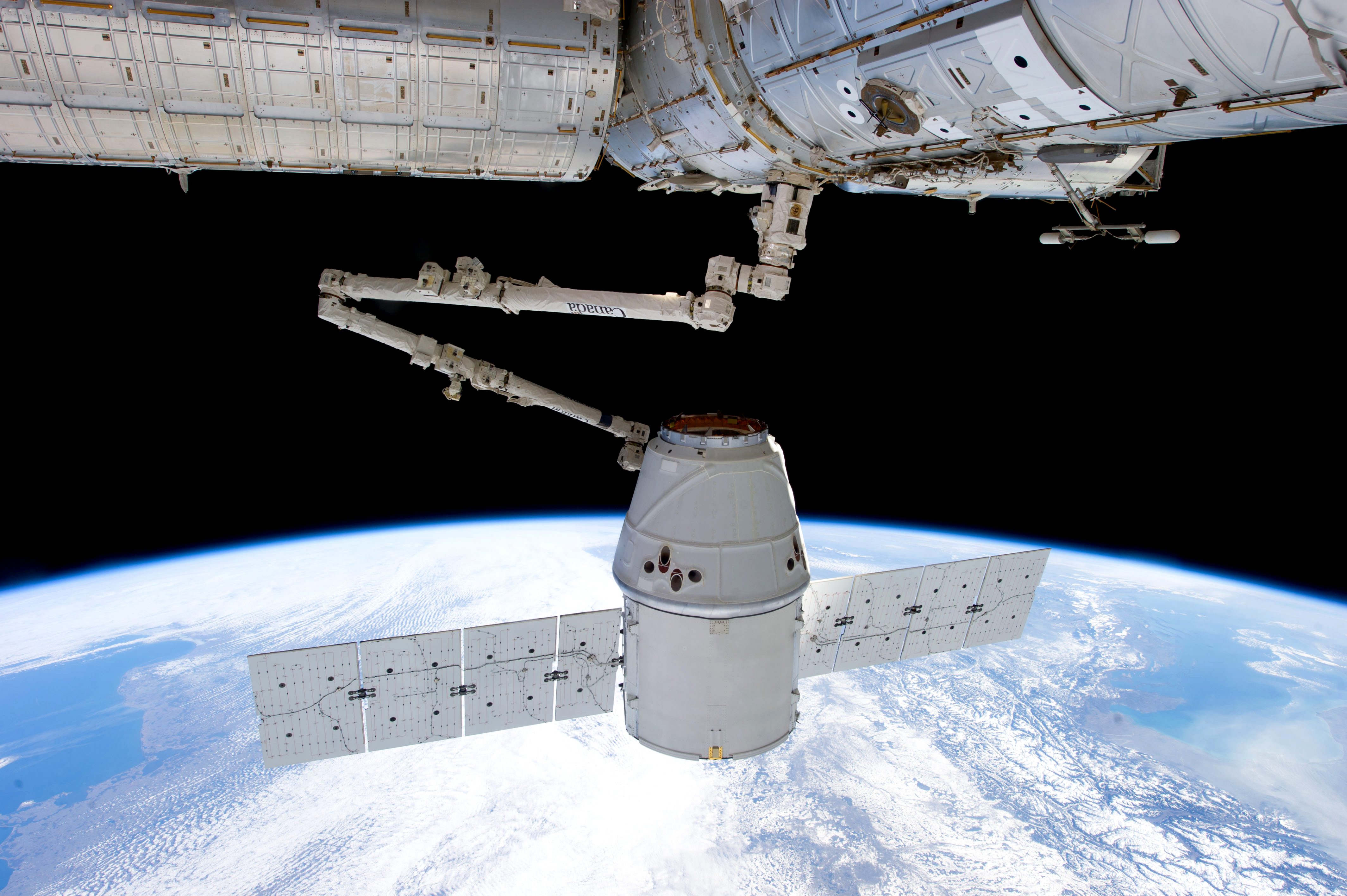
Photo by NASA.
There’s lots going on in and around the 13 year old International Space Station. The SpaceX and Orbital Sciences companies are hauling supplies uphill to the orbiting outpost. SpaceX’s Dragon craft has the ability to return to Earth and thusly helps bring experiments and equipment, like the Soyuz, back to the surface. Dragon will soon be certified for human transport.
I like trying to catch “dual” flyovers, that is when a spacecraft is near the ISS. You can see the ISS pass over Ontario in the early evening until February 27. After March 11, the station will be visible before dawn.
See http://heavens-above.com/ for flyover information.
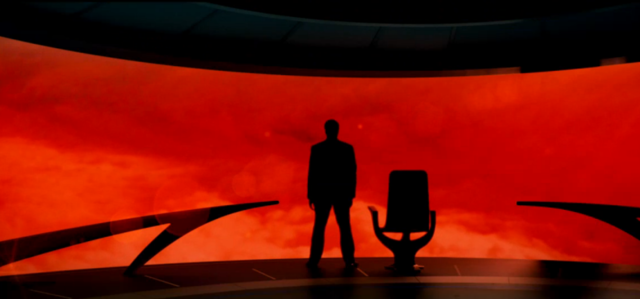
Image by Cosmos Studios, National Geographic Channel, and Fuzzy Door Productions.
Are you ready for the next journey into the Cosmos? I remember watching the PBS Cosmos series hosted by Carl Sagan in the 1980. It is probably deepened my interest and excitement about space and science. I’ve heard some say that Cosmos: A Personal Voyage is dated and stale. That is not my impression. I recently watch the original series and what struck me was how little was out-of-date.
Still, I’m looking forward to the new series, Cosmos: A Space-Time Odyssey, with Neil deGrasse Tyson hosting. The trailers look incredible.
It will be carried by the Fox network in the US; Global TV is picking it up in Canada. The show starts March 9. All aboard!
Be seeing you.
Contact Blake for errors, omissions, questions.
Blake Nancarrow
astronomy at computer-ease dot com
| Attachment | Size |
|---|---|
| SkyChart2014FebV2.pdf (2.95 MB) | 2.95 MB |

